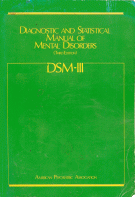I came to psychiatry from practicing Internal Medicine with something specific in mind to learn about – and it wasn’t psychiatric patients. It was the subset of medical patients whose problems were clearly mental – and there were plenty of them. But in a psychiatry residency, that’s not where you start. It’s on the wards of a beleaguered City/County hospital populated with psychotic people and an emergency room called the Crisis Intervention Service [throw in that it was the end of the de-institutionalization period]. I found myself in the middle of interesting times, to say the least. By 1978, I was one year out of residency, in a psychoanalytic training program, in charge of that Crisis Intervention Service, and having a fine time. There was a book published that year that I didn’t know about, but it was a harbinger of a really big change coming to psychiatry:

Schizophrenia: Science and Practice, Edited by J. C. Shershow. [Pp. 248]; Harvard University Press: Cambridge, Massachusetts. 1978. Chapter 5: The Evolution of a Scientific Nosology by Gerald Klerman.

A couple of years later [1980], there was another book that nobody missed [the DSM-III], ushering in that big change – the medicalization of psychiatry.
I’ve quoted Klerman’s neoKraepelinian Tenets frequently but never had the whole chapter in hand. Some time back, I ran across a dogeared copy of the Shershow book for $2.53 online and ordered it. In the holiday, post-election lull, I opened it up and ended up reading the whole book. It was a window into to state of psychiatry at the dawn of the new era, the dawn of my own psychiatric career. The Klerman chapter was a lot more that just the neoKraepelinian Tenets. I’m going to write about it some, but I thought others of you might want to read what he had to say, so I Scanned/OCR’d it, and it can be downloaded here as a .doc file.
From the last paragraph “in the absence of etiological knowledge, the most fruitful way to proceed is to define, on descriptive clinical grounds, the various syndromes. This will allow us to bring together groups that are relatively homogeneous from a clincial point of view and to examine them for response to treatment or to subject them to genetic or biochemical investigation. In principle, there is no reason why this approach cannot be applied to the search for psychogenic causation in early childhood experience, or to family interaction, or to communication defects, or to social deprivation. There is no reason why this approach cannot be used for the study of non biological treatments such as individual or group psychotherapy or milieu therapy”
Actually, there is an enormously powerful reason why this approach was not applied to the search for causation in Adverse Childhood Experiences, or to social deprivation. That is because biochemical investigation is the most amenable to creating a monopoly, through the creation of patented medicines, which is extremely profitable, which allows further dominance of psychiatry. There is no monopoly possible in investigating how sexual abuse may cause schizophrenia, therefore no enormous profits to be reaped, and therefore no influence on the field of mental health.
Klerman’s chapter was well measured even in 1978 and there is little in it to quibble about today. There are a few glosses I would add in 2016.
1. The concept of disease as a syndromal constellation of signs and symptoms with a distinctive natural history remains the foundation of medical nosology. Remember, Parkinson’s disease was a disease long before dopamine depletion was identified in the substantia nigra.
2. All medical classifications are subject to revision/refinement as new information is obtained.
3. Refinement of nosology is an iterative process in which the accepted definition of a disease is regarded first as the independent variable, then as the dependent variable in relation to new knowledge such as proposed etiological factors. The etiological refinement that occurred with our recognition of multiple parkinsonian syndromes that are look-alikes for Parkinson’s disease illustrates this principle.
4. Following that principle, Bleuler’s term “the group of schizophrenias” could well apply today, as Klerman opined in 1978.
5. In 1978 Klerman did not have the term allostatic collapse available to describe the state change from a compensated “at risk of psychosis” condition under stress to a decompensated psychotic condition. That’s what gets patients with acute schizophrenic episodes admitted to hospital – they have gone beyond a continuity with normal experiences.
6. Related to the above, the course of illness and the staging of clinical signs and symptoms add important context to cross-sectional diagnoses. The concepts of prodrome and residual disorder, seen in context with a history of the full psychotic break, fill out the disease construct with clinical nuances that are not captured by formal diagnostic criteria.
7. Likewise, the concept of forme fruste in the expression of a disorder like schizophrenia adds important clinical context. This is the grey area where schizoid personality functioning shades into frank psychotic decompensation. Klerman would rightly say that prodromal psychosis and forme fruste schizophrenia are clinical constructs with low reliability, but that does not mean they should be abandoned. Just look at the dismal kappa reliability values for many of the DSM-5 disorders. Validity is not the same as reliability.
8. Next, some high profile features of clinical disorders might best be conceptualized as complications rather than as defining elements of those disorders. In surgical practice, perforation of the appendix with resultant peritonitis is not a defining feature of appendicitis but rather is a recognized complication. Psychotic symptoms in melancholic depression likewise are best viewed as complications that are not consistently present in recurrent episodes. A similar case could be made for the appearance of catatonia in schizophrenic, depressed, and manic patients. Though all these examples are viewed as complications, nevertheless they drastically change the clinical management of the patients.
9. The above points underline a fact that we should always remember: diagnosis of an individual patient is not the same as defining a disorder. Structured diagnostic criteria as recommended by Klerman can only serve as a nomothetic check on the idiographic diagnoses made by clinicians. To ignore that is to sign on to checklist diagnoses.
10. Finally, adding to what Klerman said about the etiological nit pickers like Szasz, we have many examples in general medicine of unquestionably organic disorders for which no clear pathology has been identified. One of my favorite examples here is febrile convulsions of childhood. Like an acute psychotic break, infantile febrile convulsions represent a state change of allostatic collapse. The patients recover, usually with no residual deficits. This example is a plausible analog for stress-related brief psychotic episodes in adolescence, with good functional recovery (a.k.a. schizophreniform disorder). The absence of “etiological” evidence in both examples does not contradict the presence of allostatic collapse or the presumptive organic basis, as Klerman outlined.
I think one area where the early descriptions got it wrong was the categorical foundation of catatonic symptoms. Even early on, when I was working with a low functioning populations, my fellow residents and clinically involved attendings noted that we saw this far more often as a complication of extreme mania than schizophrenia.
Klerman spoke of the “Absence of etiological knowledge”. However, now we have very important knowledge of the etiology of many cases of psychosis. Any discussion of psychosis needs to take into account a massive meta-analysis in Schizophrenia Bulletin of studies with a total of 80,000 participants. The result was that across prospective and cross-sectional studies, people with childhood adversity (sexual, physical or emotional abuse, parental death, etc) were 3 times more likely to have psychosis than those without.
The entire approach to psychosis needs to be shifted, given this strong evidence that psychological injuries are a major cause to psychosis. Not only would it change our view of the etiology, it would force a fundamental shift in how we assess people who have symptoms. We would first ask “What happened to you?” to probe about the trauma they likely experienced. This would take the primary focus off their current symptoms, and onto their traumas. People would them be told that their symptoms are the result of their traumas, not some mythical chemical imbalance, or equally mythical and demoralizing “chronic brain disease.” This would then shift the focus to understanding and healing their traumas, rather than prescribing a pill to numb their emotions.
http://schizophreniabulletin.oxfordjournals.org/content/38/4/661.full
Eric,
“Psychosis” does not equal “schizophrenia”.
James, what you say about catatonia seems right to me. That’s why it would seem to make more sense to call catatonia a complication.
Eric, the meta-analysis you cited did not establish childhood adversity as an etiological factor but rather as a risk factor. And as James noted, not all psychosis is schizophrenia. The authors included a variety of psychosis diagnostic categories as well as cases of “subclinical psychotic experiences,” which gets them some distance from Klerman’s discussion. Anyway, the PAR or population attributable risk was 33%, which means the majority of their cases of psychosis could not be ascribed etiologically to early life adversity. For the expression of a disorder like schizophrenia it’s probably best to think in terms of multiple risk factors that combine to produce the proximate pathophysiology. In general terms, these multiple risk factors are likely to include genetic risk, intra-uterine challenges like maternal infections or malnutrition, current life stress, substance abuse, and epigenetic change resulting from early childhood adversity along with the psychological scarring that results from early childhood adversity. Seen in this context, what you say above about management seems more reductionist than is warranted.
Dr. C., your posts– particularly the first one– in this thread are shockingly lucid. After several weeks of listening to confused babbling and disinformation in the post-election hangover, I can’t tell you how invigorating it is to just… read or hear something that actually makes sense. (Hey, the rest of the blog is great, too, I’m just saying this was a great way to start my morning.)
I’m going to copy those 10 points and stash them in my research folder so I can read them periodically. Thanks so much.
Catalyzt, I appreciate your kind words. While you thank me, I thank my great teachers!